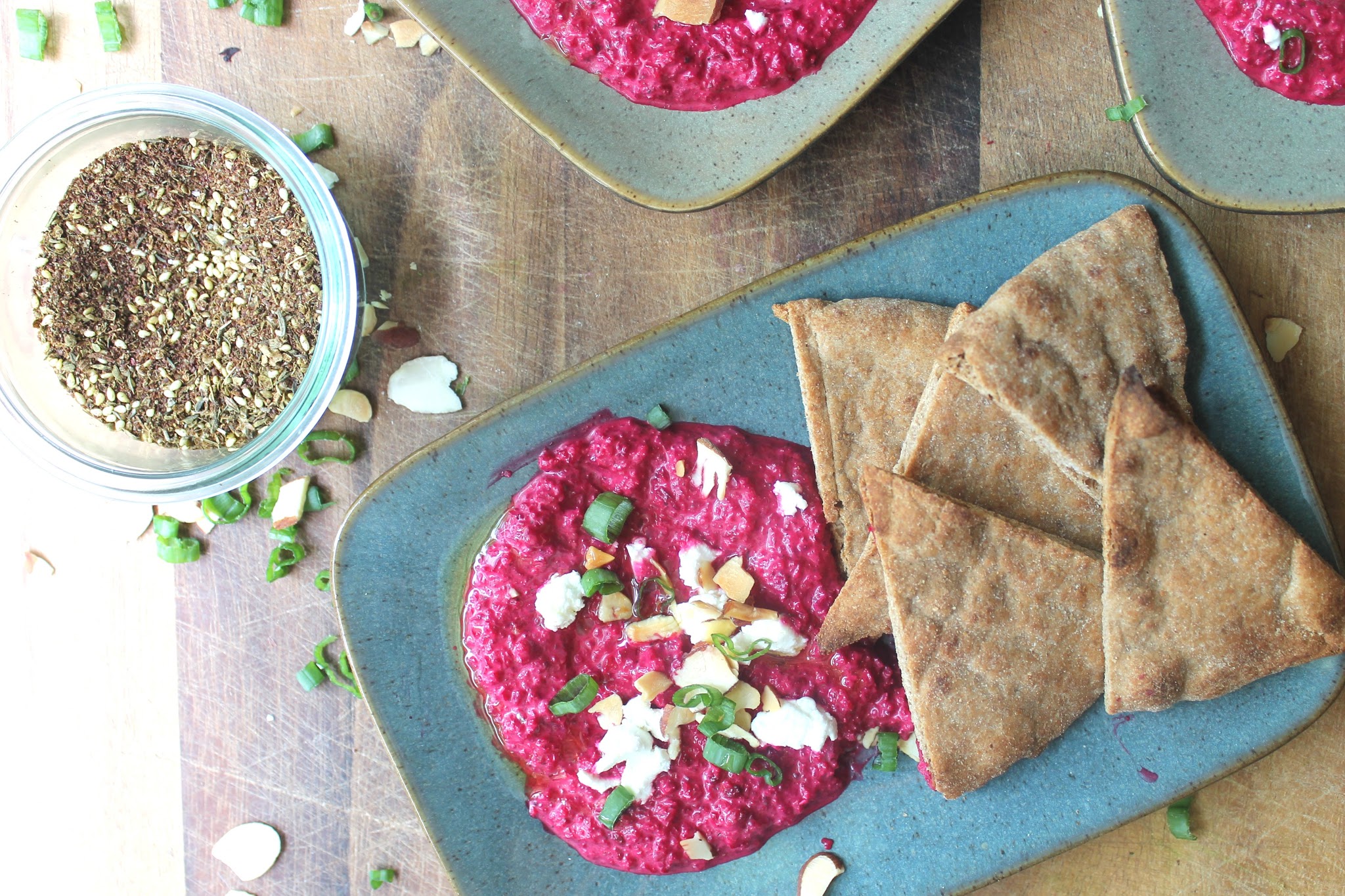 As self-proclaimed cookbook nerds, we’ve seen a lot of beautifully photographed and written recipe collections over the years, but for our money, British-Israeli chef Yotam Ottolenghi’s cookbooks really take the genre to a whole other level. They are, in a word, transcendent. Heavily focused on vegetables and locally sourced fare, looking at his food gives you a sort of culinary wanderlust. You just want to go there. This recipe plays into our already existing obsession with beets. We’ve already offered up these deep garnet root vegetables in a Roasted Beet Salad with goat cheese and pistachios, or grated and pickled atop a stunning Root Vegetable Crostini, so when this recipe showed up on our radar, it went into the “must try immediately” category.
As self-proclaimed cookbook nerds, we’ve seen a lot of beautifully photographed and written recipe collections over the years, but for our money, British-Israeli chef Yotam Ottolenghi’s cookbooks really take the genre to a whole other level. They are, in a word, transcendent. Heavily focused on vegetables and locally sourced fare, looking at his food gives you a sort of culinary wanderlust. You just want to go there. This recipe plays into our already existing obsession with beets. We’ve already offered up these deep garnet root vegetables in a Roasted Beet Salad with goat cheese and pistachios, or grated and pickled atop a stunning Root Vegetable Crostini, so when this recipe showed up on our radar, it went into the “must try immediately” category.
 It came to us via Ottolenghi’s cookbook “Jerusalem”, wherein he expounds upon the versatility of this particular vegetable within the various cuisines explored in the book. It shows up in soups, as a tangy pickled garnish, even folded into gorgeously colorful latkes, but this recipe was the one that really stood out and proved that Ottolenghi is totally one of us when it comes to these heavenly ruby roots.
It came to us via Ottolenghi’s cookbook “Jerusalem”, wherein he expounds upon the versatility of this particular vegetable within the various cuisines explored in the book. It shows up in soups, as a tangy pickled garnish, even folded into gorgeously colorful latkes, but this recipe was the one that really stood out and proved that Ottolenghi is totally one of us when it comes to these heavenly ruby roots.
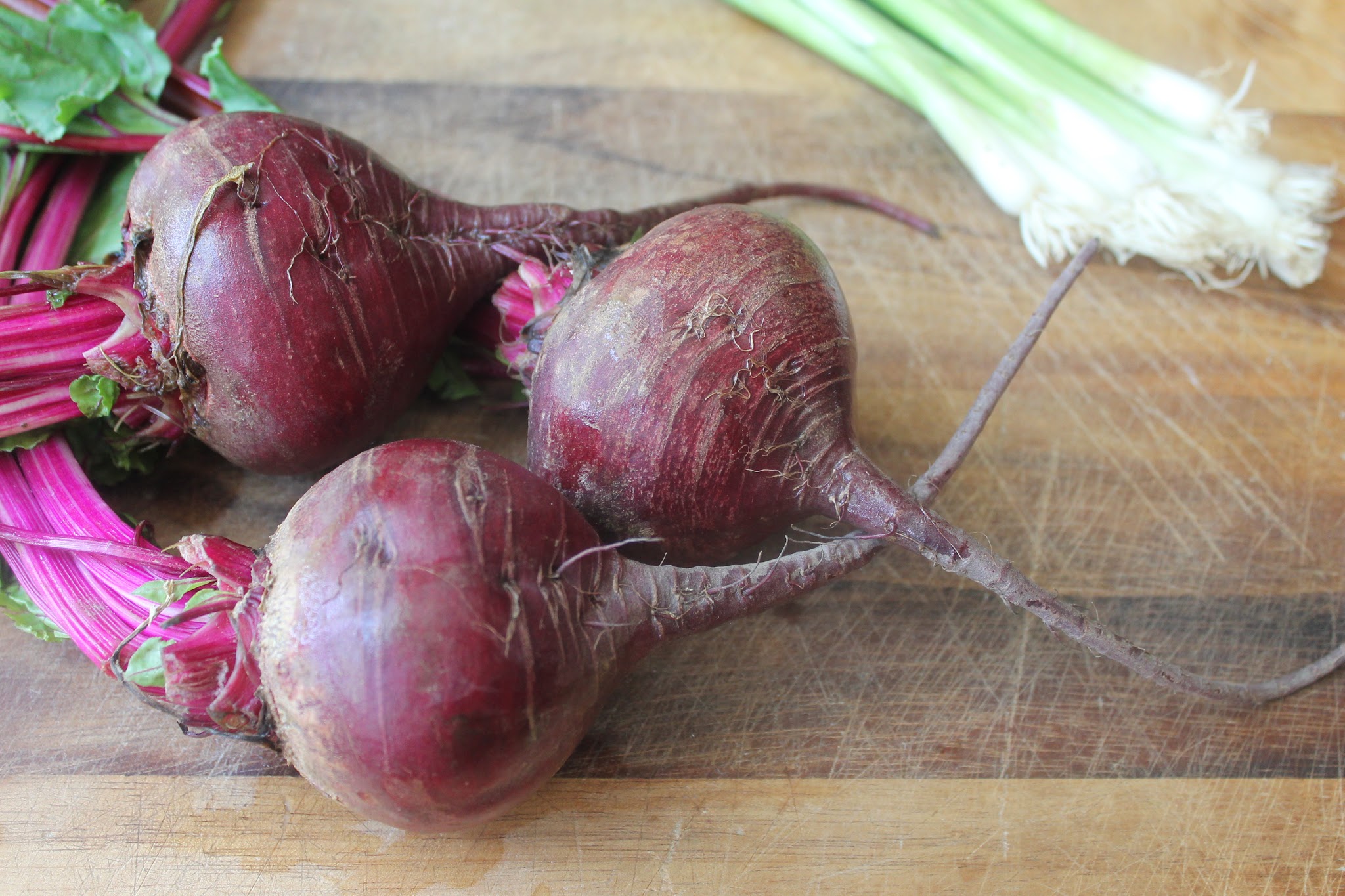 This savory purée also continues our theme of lighter fare with minimal preparation to help cope with the hotter days of the season. This colorful dip will elevate the visual and flavor appeal of any summer mezze platter or array of simple crostini. While a good beet purée is a welcome addition to any summer entertaining menu, the great advantage (and surprise) of this particular recipe comes in the interplay between the flavors of the beets and the herbs and spices in the za’atar.
This savory purée also continues our theme of lighter fare with minimal preparation to help cope with the hotter days of the season. This colorful dip will elevate the visual and flavor appeal of any summer mezze platter or array of simple crostini. While a good beet purée is a welcome addition to any summer entertaining menu, the great advantage (and surprise) of this particular recipe comes in the interplay between the flavors of the beets and the herbs and spices in the za’atar.
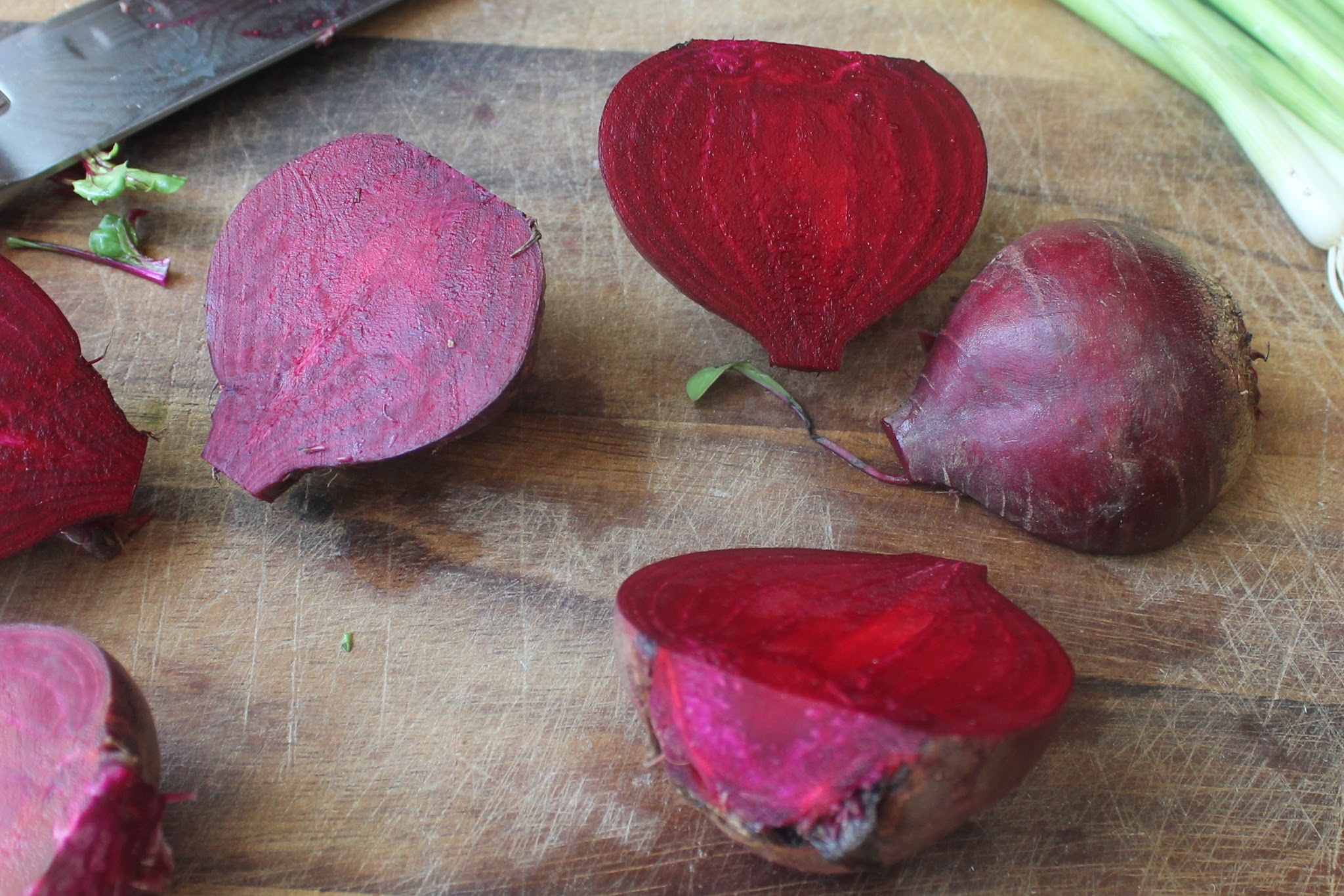 Za’atar, while being distinctly Middle Eastern, deserves a spot on everyone’s spice rack along with a great Italian seasoning blend, and our old standby Herbes de Provence. While there are a wide variety of regional variations to the blend, traditionally it contains oregano, thyme, marjoram, toasted sesame seeds and salt. Many brands will include sumac, cumin, savory, coriander or fennel seeds. As you might surmise from this list, you really can’t go wrong, and like the aforementioned seasoning blends, this is a quick, fantastic way to impart a wonderful international flavor profile to any dish.
Za’atar, while being distinctly Middle Eastern, deserves a spot on everyone’s spice rack along with a great Italian seasoning blend, and our old standby Herbes de Provence. While there are a wide variety of regional variations to the blend, traditionally it contains oregano, thyme, marjoram, toasted sesame seeds and salt. Many brands will include sumac, cumin, savory, coriander or fennel seeds. As you might surmise from this list, you really can’t go wrong, and like the aforementioned seasoning blends, this is a quick, fantastic way to impart a wonderful international flavor profile to any dish.
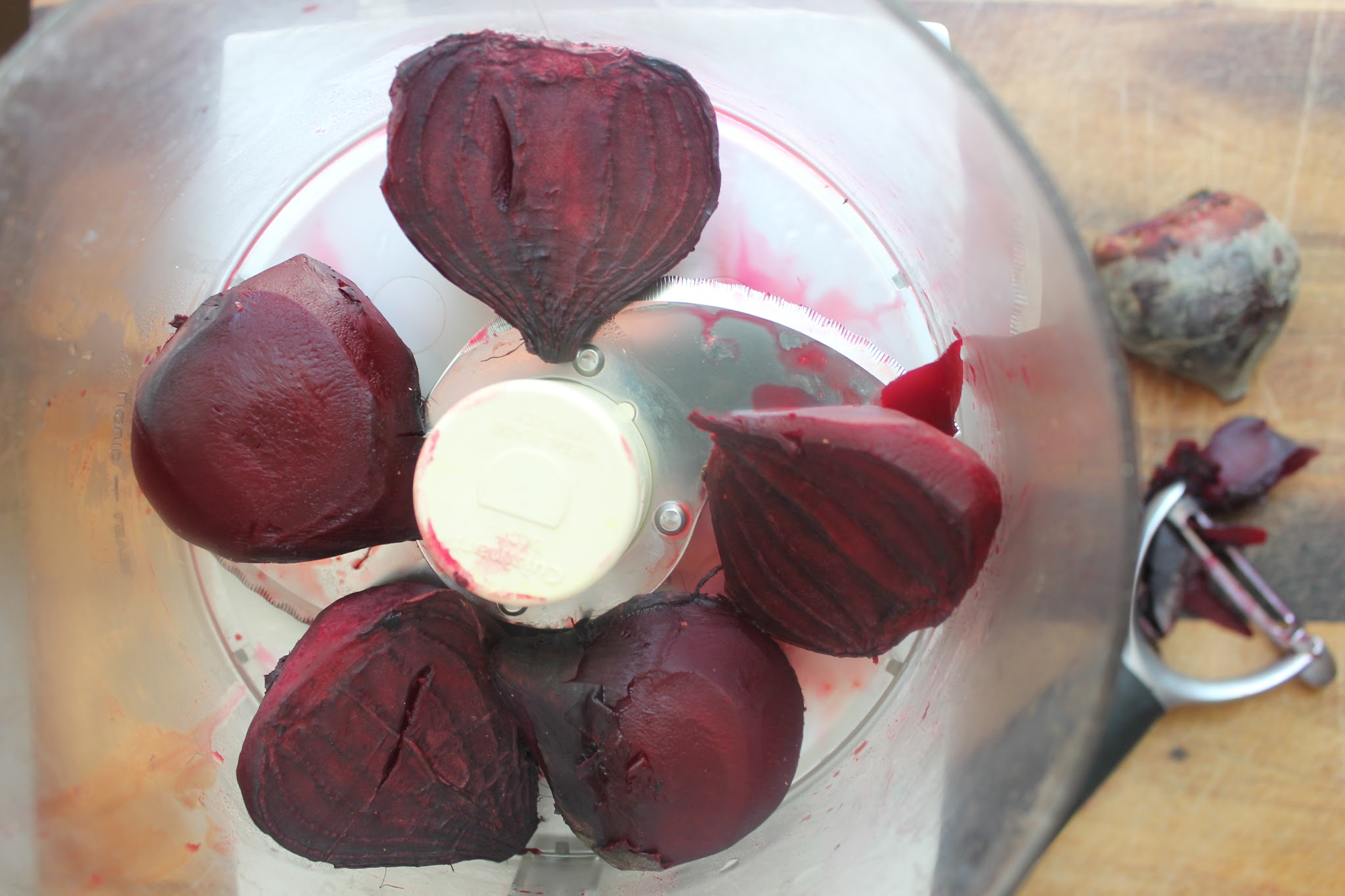 In this particular instance, the herbal and spice notes of the za’atar complement the earthy, lightly sweet characteristics of the roasted beets so beautifully that we’re considering adding it to our next batch of homemade quick pickled beets and calling it a day.
In this particular instance, the herbal and spice notes of the za’atar complement the earthy, lightly sweet characteristics of the roasted beets so beautifully that we’re considering adding it to our next batch of homemade quick pickled beets and calling it a day.
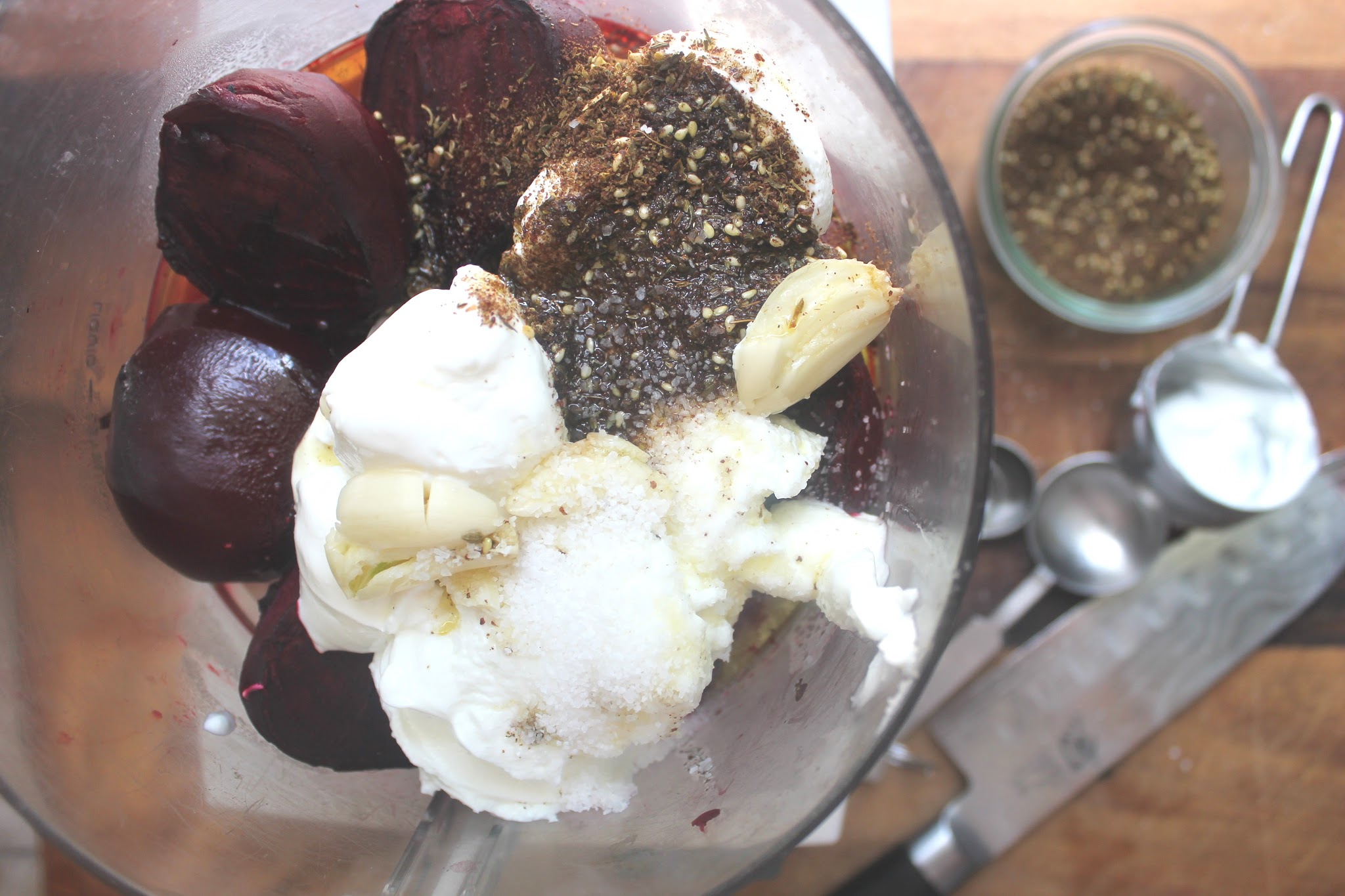 We did eliminate the red chile flakes from the original recipe because while we’re huge proponents of “the spicier the better”, the more delicate spice notes of the za’atar deserve to be appreciated on their own. Perhaps in Autumn, when the weather cools, the chile will find its way back into the fold.
We did eliminate the red chile flakes from the original recipe because while we’re huge proponents of “the spicier the better”, the more delicate spice notes of the za’atar deserve to be appreciated on their own. Perhaps in Autumn, when the weather cools, the chile will find its way back into the fold.
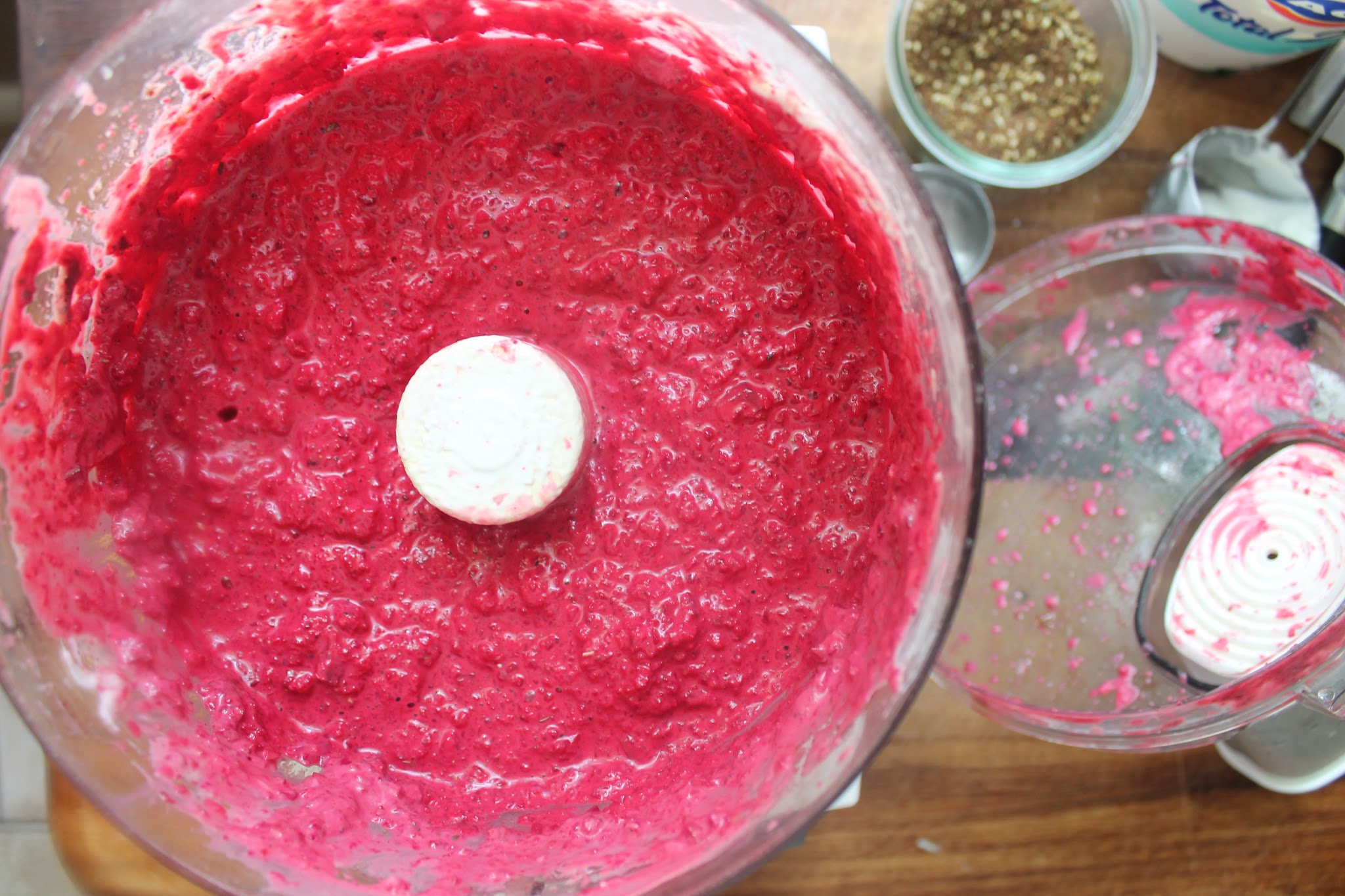 As further proof of the utility of this dip, and further evidence that in our world just about anything can become a condiment, this is also a fantastic spread for burgers and grilled sandwiches, or can be used as a relish to dress grilled meats and vegetables. You could also simply go the route of toasted pita chips (gluten free or regular) or crudité for a fuss-free appetizer or snack. Given all of these uses, don’t expect it to last very long. Fortunately, this falls into the same category as a lot of our favorite recipes, as it is so easy, you can always make more in no time at all. Enjoy!
As further proof of the utility of this dip, and further evidence that in our world just about anything can become a condiment, this is also a fantastic spread for burgers and grilled sandwiches, or can be used as a relish to dress grilled meats and vegetables. You could also simply go the route of toasted pita chips (gluten free or regular) or crudité for a fuss-free appetizer or snack. Given all of these uses, don’t expect it to last very long. Fortunately, this falls into the same category as a lot of our favorite recipes, as it is so easy, you can always make more in no time at all. Enjoy!
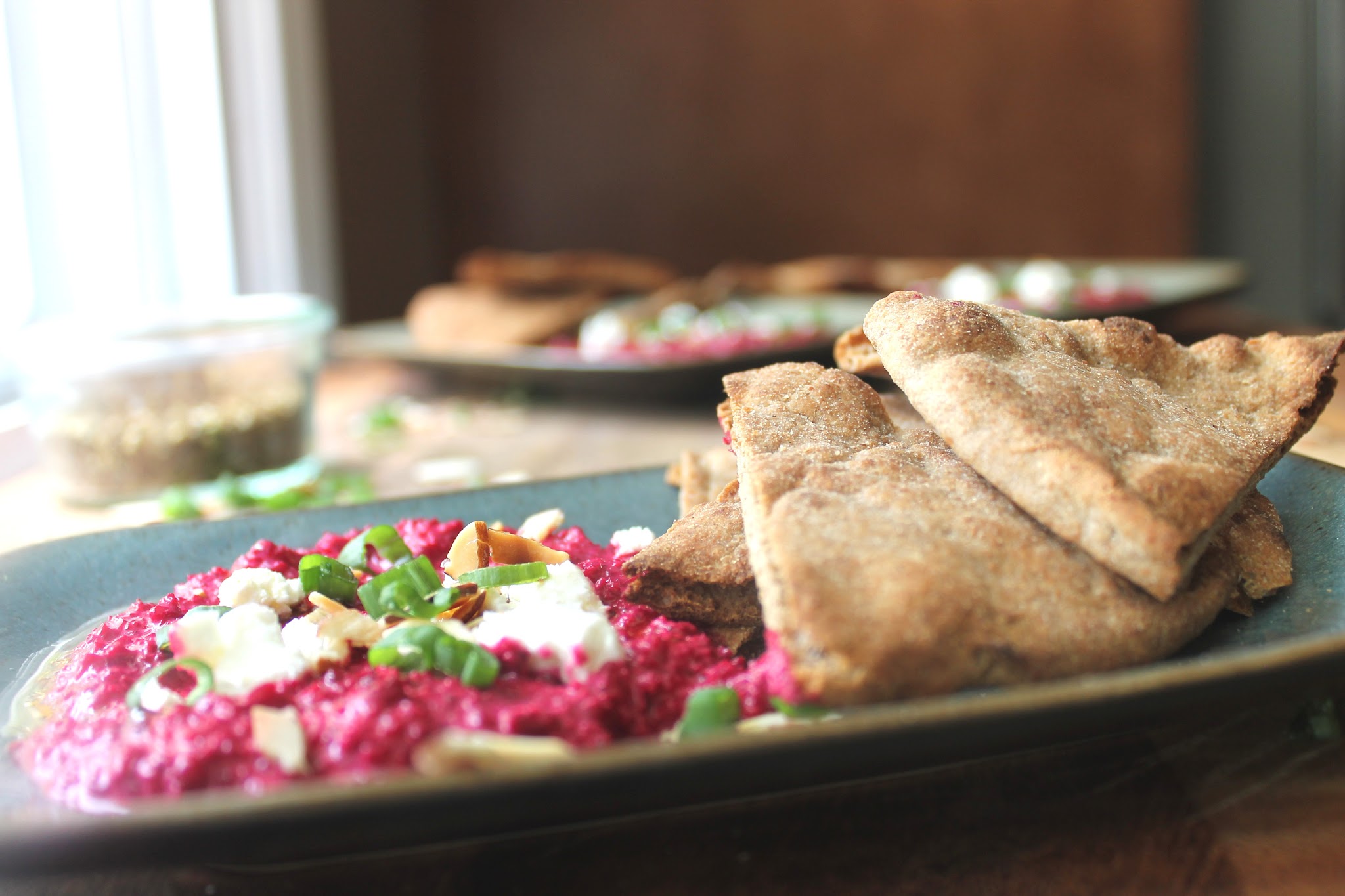 Adapted from Jerusalem: A Cookbook.
Adapted from Jerusalem: A Cookbook.
- 3 large beets (about 1 pound), trimmed and sliced in half lengthwise
- 2 small garlic cloves, peeled
- 1 cup plain Greek yogurt
- 3 tablespoons extra-virgin olive oil
- 1½ tablespoons pure maple syrup
- 1 tablespoon za’atar
- 1 teaspoon kosher salt
- ¼ cup roasted sliced almonds
- 2 tablespoons goat cheese, crumbled
- 2 scallions, thinly sliced
- Warm pita bread, for serving (or sliced carrots and cucumbers for a grain-free option)
- Preheat the oven to 400°. Put the beets in a small roasting pan and bake for about 45 to 50 minutes, until tender. Let cool slightly.
- Peel the beets, cut into wedges and transfer to a food processor. Add the garlic and yogurt and pulse until blended. Add the olive oil, maple syrup, za’atar and salt and puree. Scrape into a wide, shallow bowl, or spread onto a large plate. Scatter the almonds, goat cheese and scallions on top and serve with bread, carrots or cucumbers.
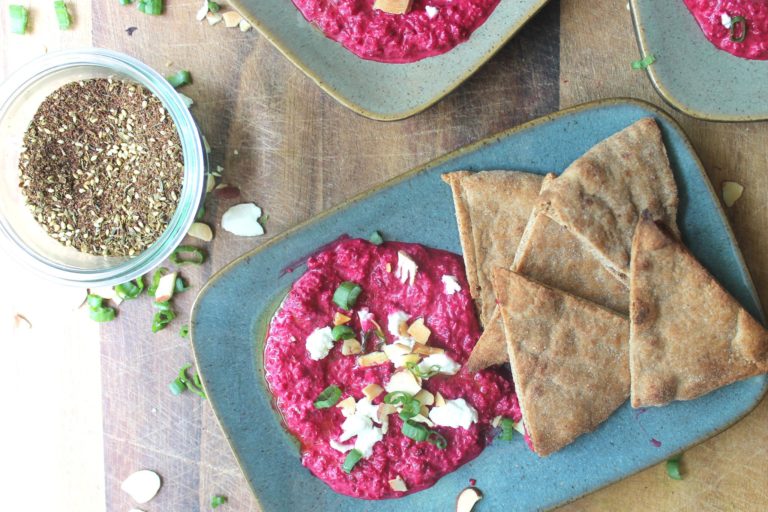

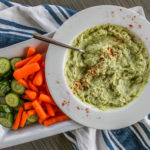

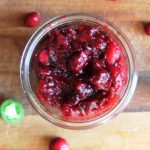
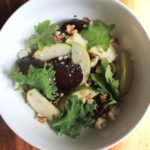
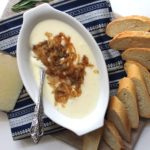
Jennifer S Powers says
I made this over the weekend and it was great!!
Kyle & Grace says
That is fantastic to hear! You’re the best. Glad it was such a success. <3